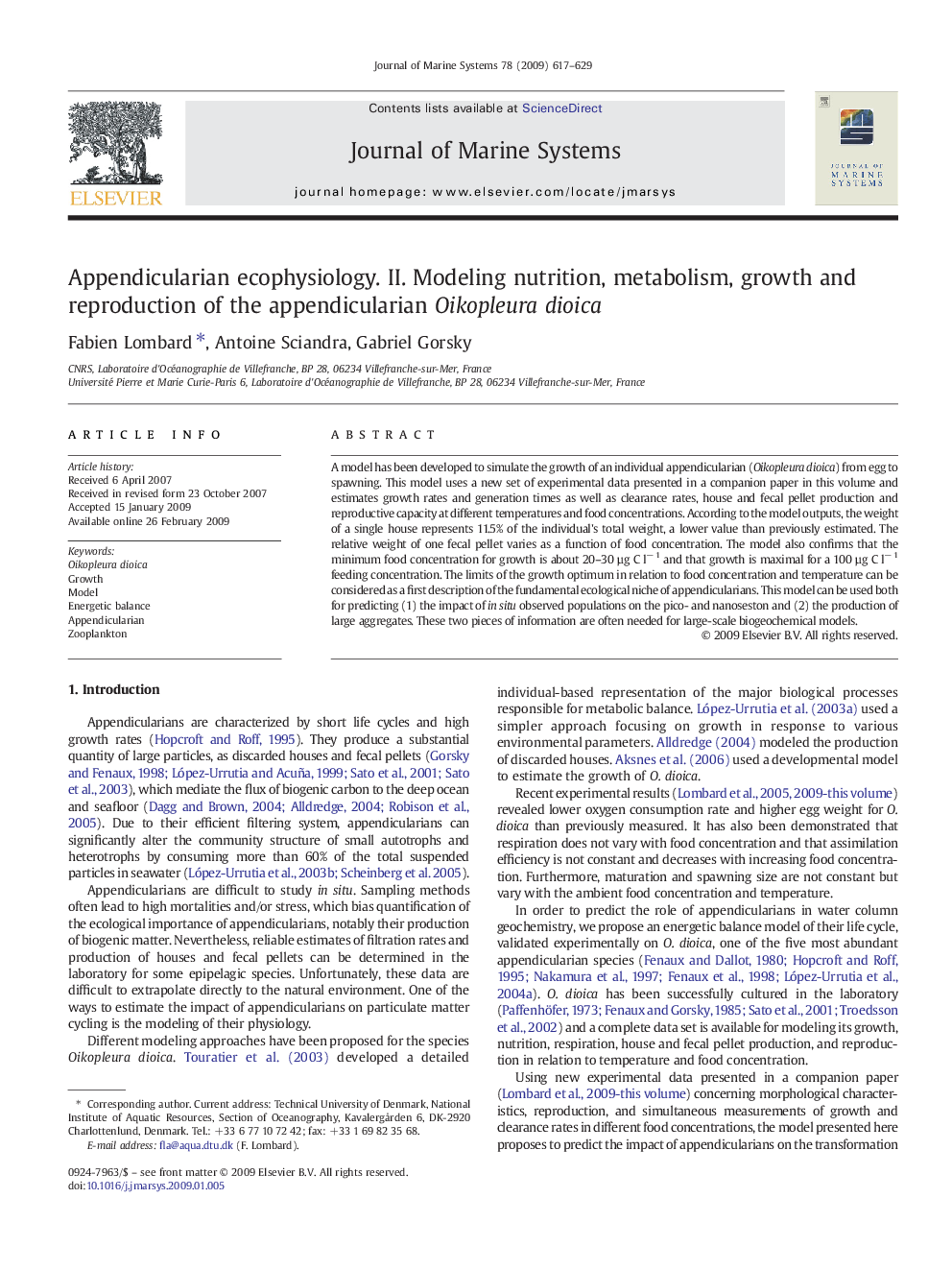| Article ID | Journal | Published Year | Pages | File Type |
|---|---|---|---|---|
| 4548685 | Journal of Marine Systems | 2009 | 13 Pages |
Abstract
A model has been developed to simulate the growth of an individual appendicularian (Oikopleura dioica) from egg to spawning. This model uses a new set of experimental data presented in a companion paper in this volume and estimates growth rates and generation times as well as clearance rates, house and fecal pellet production and reproductive capacity at different temperatures and food concentrations. According to the model outputs, the weight of a single house represents 11.5% of the individual's total weight, a lower value than previously estimated. The relative weight of one fecal pellet varies as a function of food concentration. The model also confirms that the minimum food concentration for growth is about 20-30 µg C lâ 1 and that growth is maximal for a 100 µg C lâ 1 feeding concentration. The limits of the growth optimum in relation to food concentration and temperature can be considered as a first description of the fundamental ecological niche of appendicularians. This model can be used both for predicting (1) the impact of in situ observed populations on the pico- and nanoseston and (2) the production of large aggregates. These two pieces of information are often needed for large-scale biogeochemical models.
Related Topics
Physical Sciences and Engineering
Earth and Planetary Sciences
Oceanography
Authors
Fabien Lombard, Antoine Sciandra, Gabriel Gorsky,
